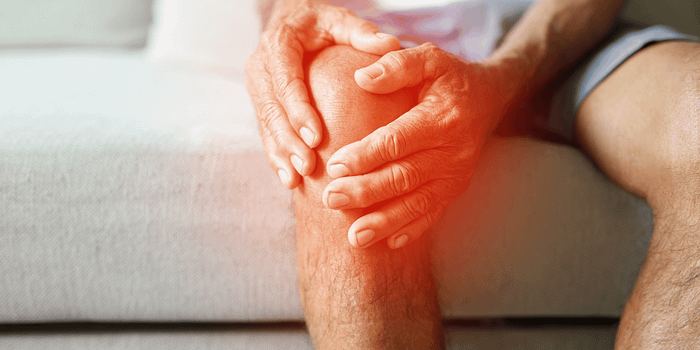Ultrasound-Guided Cortisone Injections for Knee Arthritis
Introduction
Knee arthritis is a common condition that affects the knee joint, leading to pain, stiffness, and reduced mobility. It can develop due to age-related degeneration, inflammatory conditions, or previous joint injuries. Managing knee arthritis often involves a combination of lifestyle modifications, physiotherapy, and targeted medical interventions.
Ultrasound-guided injections, including cortisone injections, hyaluronic acid injections, and Cingal injections, are used in the management of knee arthritis. These treatments are administered with ultrasound guidance to ensure precision and optimal delivery of medication. This blog explores knee arthritis in detail, covering its anatomy, pathology, symptoms, diagnosis, and how different types of injections may be used as part of a management plan.

Anatomy of the Knee Joint
The knee is a complex hinge joint that connects the thigh bone (femur) to the shin bone (tibia). It consists of several structures that contribute to stability, movement, and weight-bearing function.
Bones of the Knee
- Femur (Thigh Bone) — The upper portion of the knee joint.
- Tibia (Shin Bone) — The lower portion of the joint.
- Patella (Kneecap) — A small bone that sits in front of the knee and helps with knee extension.
Cartilage
- Articular Cartilage — A smooth, slippery tissue covering the ends of bones, allowing for pain-free movement.
- Menisci — Two crescent-shaped pieces of cartilage (medial and lateral meniscus) that act as shock absorbers between the femur and tibia.
Ligaments
- Anterior Cruciate Ligament (ACL) and Posterior Cruciate Ligament (PCL) — Control forward and backward movement of the knee.
- Medial Collateral Ligament (MCL) and Lateral Collateral Ligament (LCL) — Provide side-to-side stability.
Synovial Membrane and Synovial Fluid
The knee joint is lined by a synovial membrane, which produces synovial fluid. This fluid lubricates the joint, reducing friction and aiding smooth movement.
Pathology of Knee Arthritis
Knee arthritis can develop due to various underlying conditions, including:
Osteoarthritis (OA)
- The most common form of arthritis, OA occurs due to the gradual breakdown of articular cartilage.
- Over time, the loss of cartilage leads to bone-on-bone contact, causing pain, stiffness, and swelling.
- Bone spurs (osteophytes) may develop around the joint.
Rheumatoid Arthritis (RA)
- An autoimmune condition where the body’s immune system attacks the synovial membrane.
- Chronic inflammation leads to joint damage, cartilage erosion, and deformity.
Post-Traumatic Arthritis
- Develops after knee injuries such as fractures or ligament tears.
- Previous trauma can accelerate joint degeneration.
Gout and Pseudogout
- Gout — Caused by the accumulation of uric acid crystals in the joint.
- Pseudogout — Caused by calcium pyrophosphate crystal deposits.
Causes of Knee Arthritis
- Ageing — Cartilage naturally wears down over time.
- Previous Joint Injury — Trauma increases the risk of arthritis.
- Obesity — Excess weight places additional stress on the knee joint.
- Repetitive Stress — Frequent kneeling, squatting, or high-impact activities can contribute to cartilage breakdown.
- Genetics — Some individuals have a genetic predisposition to arthritis.
Symptoms of Knee Arthritis
- Pain — Worsens with activity and improves with rest.
- Stiffness — Particularly in the morning or after prolonged inactivity.
- Swelling — Due to inflammation of the joint lining or fluid accumulation.
- Reduced Range of Motion — Difficulty bending or straightening the knee.
- Grinding or Clicking Sensation — Caused by roughened joint surfaces.
Diagnosis of Knee Arthritis
Clinical Examination
A clinician assesses:
- Joint tenderness and swelling.
- Range of motion.
- Joint stability and alignment.
Imaging Studies
- Ultrasound — Identifies synovial inflammation and fluid accumulation.
Management of Knee Arthritis
Management strategies include:
- Weight Management — Reducing excess weight to minimise joint stress.
- Activity Modification — Avoiding high-impact activities.
- Injection Therapy — Cortisone, hyaluronic acid, and Cingal injections.
Ultrasound-Guided Injections for Knee Arthritis
Cortisone Injections
Mechanism of Action
Cortisone (corticosteroid) injections work by:
- Reducing Inflammatory Mediators — Suppressing substances that cause joint inflammation.
- Modulating the Immune Response — Decreasing immune system activity in the joint.
- Altering Pain Pathways — Reducing sensitivity in pain receptors.
Hyaluronic Acid Injections
Mechanism of Action
Hyaluronic acid is a naturally occurring substance that lubricates the joint. It works by:
- Enhancing Joint Lubrication — Improves the viscosity of synovial fluid.
- Reducing Friction — Allows smoother joint movement.
- Providing Shock Absorption — Protects joint surfaces.
Cingal Injections
Cingal is a combination of hyaluronic acid and corticosteroid. It provides:
- Immediate Relief — Corticosteroid addresses acute inflammation.
- Long-Term Joint Lubrication — Hyaluronic acid supports prolonged symptom relief.
Ultrasound Guidance for Precise Injections
Ultrasound guidance ensures that the injection is delivered precisely into the joint space, minimising complications and optimising effectiveness.
Procedure Overview
- Patient Positioning — The knee is positioned for optimal access.
- Ultrasound Imaging — The clinician visualises the joint space.
- Sterile Preparation — The injection site is cleaned.
- Local Anaesthetic — A numbing agent is administered.
- Injection Delivery — The selected medication is injected under ultrasound guidance.
- Post-Procedure Monitoring — Patients are observed briefly before being discharged.
Why Choose Alton Pain Clinic for Knee Arthritis Treatment?
At Alton Pain Clinic, we offer ultrasound-guided cortisone, hyaluronic acid, and Cingal injections tailored to each patient’s needs. Our clinicians utilise advanced imaging techniques to ensure precision, patient comfort, and evidence-based approaches in pain management.
Conclusion
Knee arthritis is a progressive condition that can affect mobility and daily activities. Ultrasound-guided injections, including cortisone, hyaluronic acid, and Cingal, may be used as part of a treatment plan for targeted symptom management. At Alton Pain Clinic, our clinicians use state-of-the-art imaging techniques to ensure precise injection delivery, supporting patient care and comfort.

Comments
Post a Comment